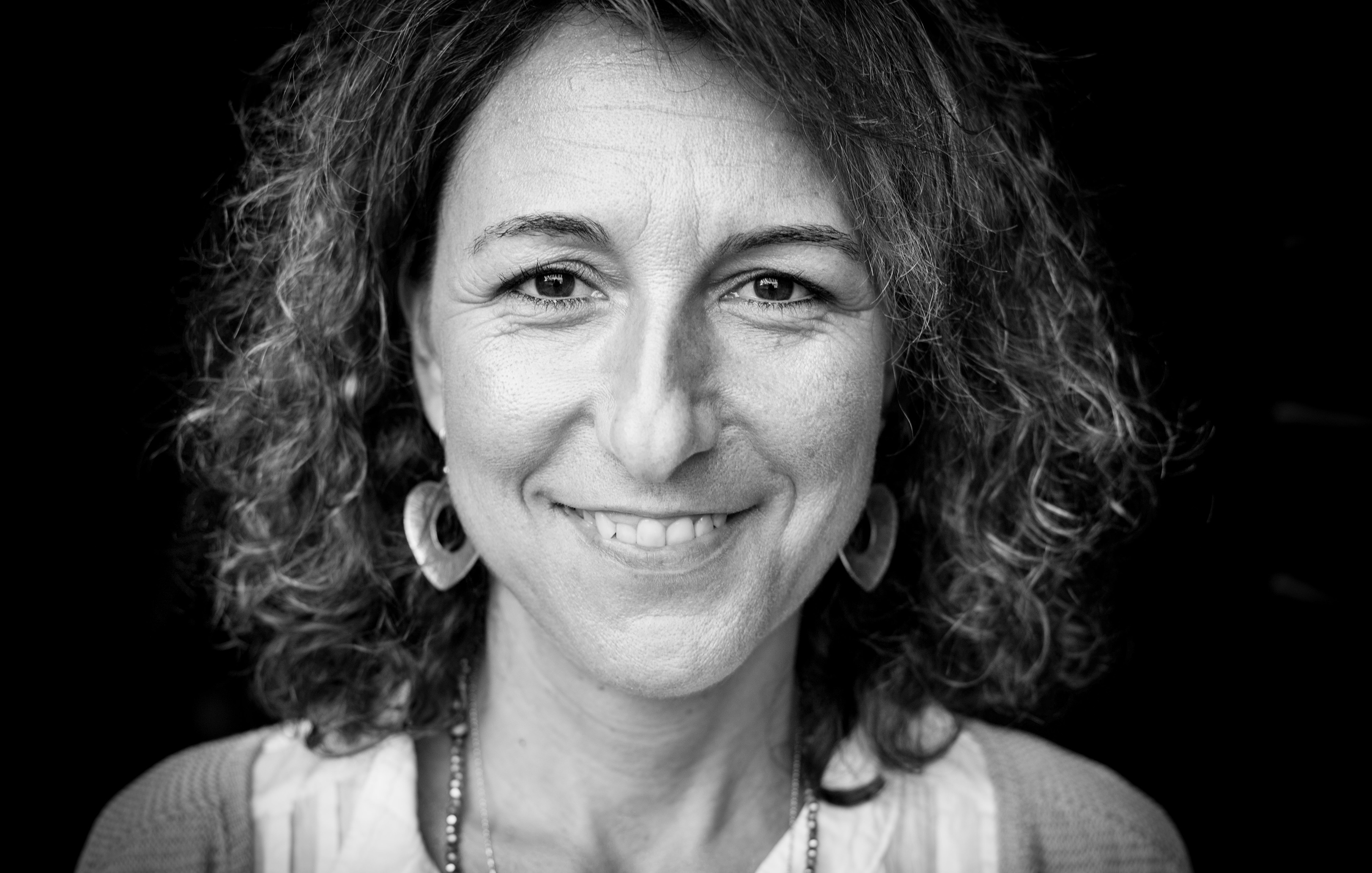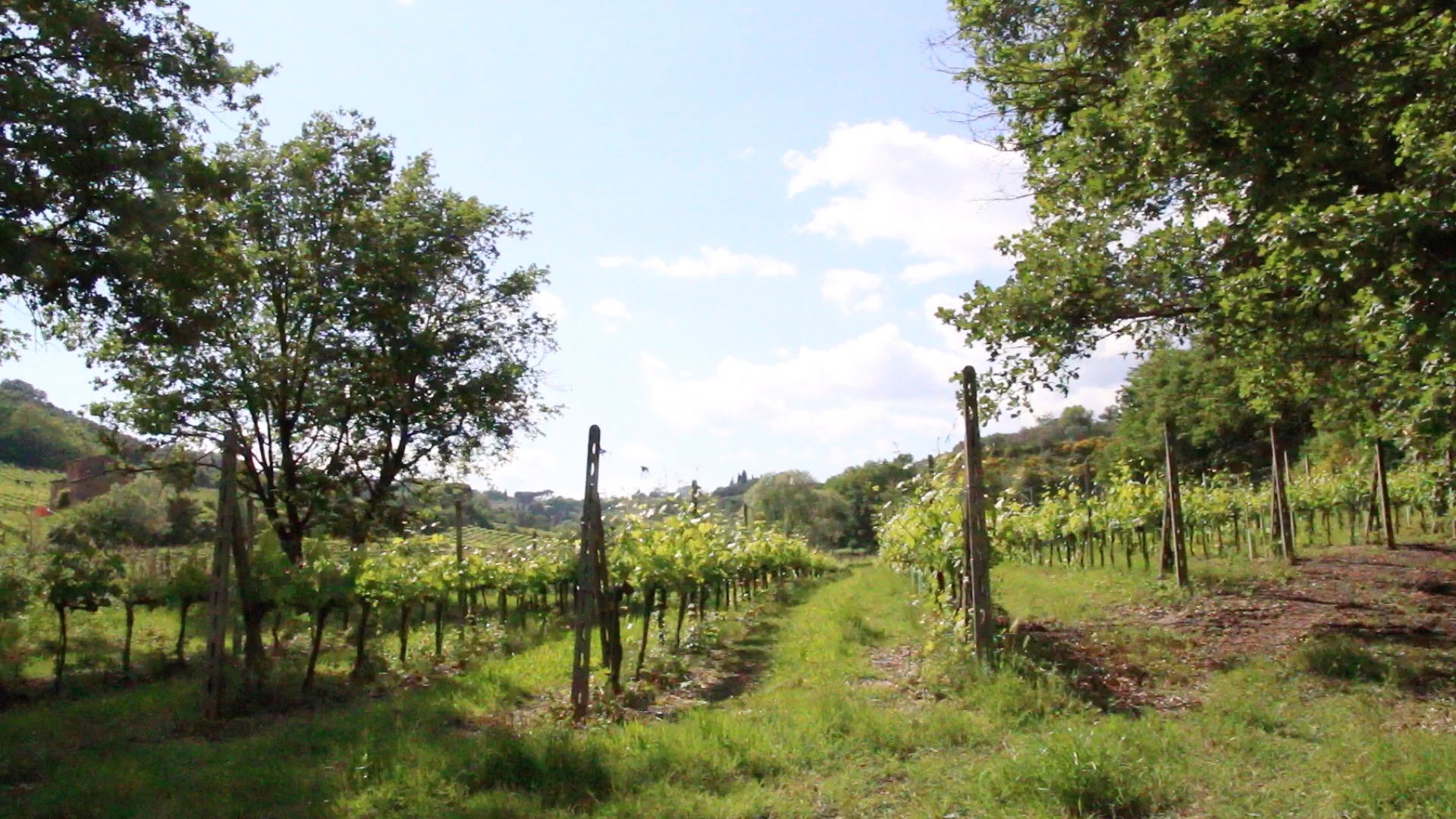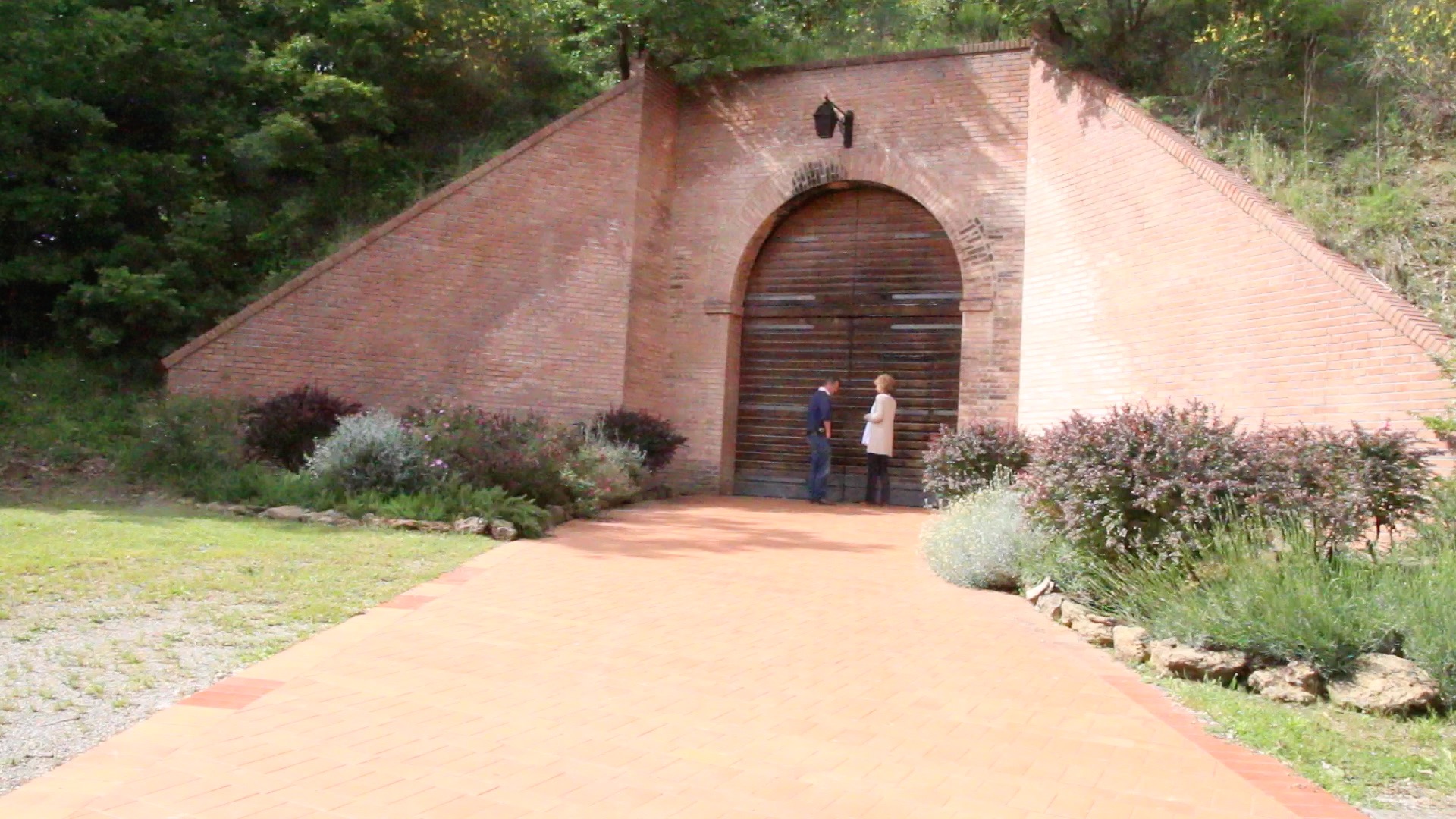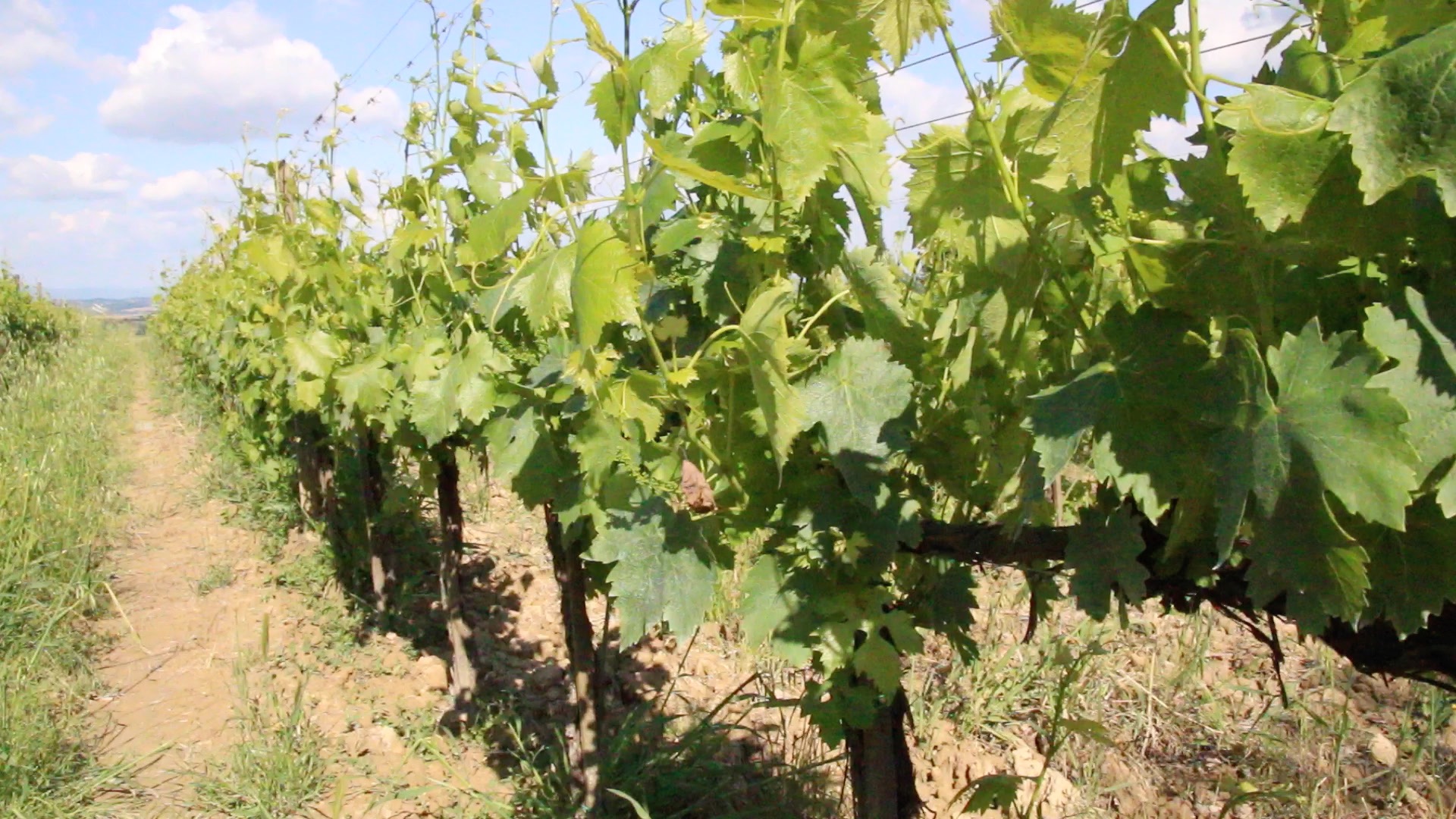
'Vino Nobile’ is an historic term most commentators ascribe to the 16th century when the Pope’s cellar master praised the wines from the Tuscan town of Montepulciano as being fit for “noblemen,” and the name stuck. In this case the wine is a rich red from mainly Sangiovese grapes. It is one of the three major Sangiovese-producing regions in Tuscany alongside Montalcino and Chianti. Here, as with Chianti, the mixture of other grape varieties is permitted and Sangiovese must comprise at least 70% of the wine.
The Tenuta Valdipiatta winery is located in the heart of the Vino Nobile di Montepulciano region in southeastern Tuscany, Italy. Valdipiatta's owners, the Caporali family, combine a keen sense of history regarding Vino Nobile’s traditions, with one eye on the future. Tenuta Valdipiatta’s interpretation of Vino Nobile is notable for three reasons. The first is because Valdipiatta’s Sangiovese vines grow on soils rich in sand, the resulting wines are richly fruited but not heavy or tough. Second, the adoption of organic wine-growing practices by Miriam Caporali has given the wines added brightness. Finally, Miriam’s decision to study in and learn from the best winemakers in Bordeaux about how to pick the grapes at the perfect moment for maximum smoothness has given Valdipiatta’s Vino Nobile wines intriguing texture. Those who argue that Vino Nobile is among Tuscany’s most exciting regions surely have estates like Valdipiatta in mind when they make that claim.
Monty Waldin talks to Miriam Caporali of Tenuta Valdipiatta about the uniqueness of Vino Nobile di Montepulciano.
Monty Waldin: Miriam, could you tell us the story of the modern history of Vino Nobile di Montepulciano?
Miriam Caporali: Yes, of course. The history of the wine Vino Nobile di Montepulciano started 2,500 years ago. The recent history with the appellation began in 1965, when the DOCG was created. Vino Nobile di Montepulciano actually is one of the first [officially recognised] appellations.
In Tuscany.
In Tuscany, yes, but actually in Italy. Vino Nobile di Montepulciano has been one of the first to get the DOC statute and the first to get the DOCG statutes in 1980, actually.

Miriam Caporali photographed by Monty Waldin
Why is it called the noble wine of the town of Montepulciano? Where does the "vino nobile" come from?
There are a few interpretations [including the one involving the Pope’s cellarmaster given in the introduction], but the one I think is most trustworthy is this one: in Montepulciano, the Nobile family were living in town. Today, for example, we have the Nobile Building in town. Their land, their vineyards, were all around the hill of Montepulciano. They were not spread out in the countryside like the Chianti area, for example. Everything was very close.
Due to this proximity, the owner of the wineries was able to personally check the quality of the wine, not the workers checking the quality, but the owner. That's why the quality of the wine was always so good because the eyes of the Nobile family were always there to check the quality of the wine, unlike other areas.
What about the modern history of Vino Nobile di Montepulciano and how has it evolved in the modern era in terms of its wine style and its perception by the market?
In my opinion, like in other areas that produce Sangiovese-based wines, the Vino Nobile di Montepulciano has changed in the last 20 years, maybe, in the direction of a wine which is more approachable and less austere compared to what it was in the past. The Sangiovese, I would say until the mid-'90s, was sometimes interpreted as a difficult varietal with astringency, sometimes a little bit hard with green tannins. Everything was accepted, just thinking the wine into the bottle would have brought some better result and satisfaction.
Today the challenge is to approach Sangiovese in order to extract only the smoothest part from the grapes. The wines today are much more immediately enjoyable, rounder, softer, but also with good potential for aging. Of course it's a difficult balance, but this is the goal of the new approach to the Sangiovese.

You talk about how it's important to make wines that are softer, that consumers can find easier to drink. During harvest, how do you check when it's exactly the right time to pick those grapes so that they're nice and ripe and they produce a really juicy, smooth wine, rather than the hard, astringent one?
It's very important to know your vineyards, to know the behavior and the history of the winery. First of all, you have to taste the grapes. Then we make a chemical analysis of the grapes. We not only do a sugar and acidity analysis, but we also analyze about 12 to 13 other different parameters. Once we have the result of the tasting, mixed, crossed together with the chemical analysis, we are much more knowledgeable about the raw material that we have in the vineyard, and we are more able to conduct the vinification, and get the result that we really want for the wine.
You're basically using scientific methods to make sure you have the capacity to make a wine that's nice and smooth. When I look at the vineyard, I see lots of weeds and grasses. What are you doing in the vineyard that's a little bit different, to make your wine better?
We really want to perfect and allow the biodiversity of vineyards, of plants, of flora, but also in terms of insects and fauna. In particular, we want to allow the presence of the natural enemy of the insects, the parasites, that are dangerous for our plants. Then it’s very important to maintain a very complex ecosystem. This is what we try to do in the vineyard.

Is this why you have all these wild plants and flowers, to attract beneficial insects?
Right. We do a rotation of seedings. We have different plants planted all around the vineyards in order to create this ecosystem. This is the exchange of balance that is between the vines and everything around it. When you look at the vineyard, first of all, look at the soil, you don’t have to look at the plant. Then you can interpret it and work in the vineyard. First you have to know what is the environment, what is around. This is our main approach.
In terms of the market, there are some very famous wines here, like your neighbor, Montalcino. They have gotten incredible write-ups from journalists in recent years, and maybe Vino Nobile hasn't quite had such fame. Why is that, do you think?
I thinkthat we don't have very important testimonials to promote our wines, because actually the history of our wine is so old. Maybe we need someone who really believes and wants to invest. For many years now, we have been more oriented on the production side than on the marketing side. We don’t have an entrepreneurial mentality; we are vintners. Today, maybe it is not enough to be really successful in the market. We have the quality, perhaps we need to open our minds to the marketing side, which is something that’s required today. I think the new generation approaches the challenges of the market in this way.
Can you explain a little bit about your particular terroir and the terroir of the Vino Nobile region as a whole?
Yes. The terroir in Montepulciano, it's quite homogeneous because as I was saying, all the vineyards in Montepulciano are very concentrated around the hill of Montepulciano. The composition of the soil is a mix of tufa and very old sand and clay. The difference between the areas is the proportion of the two components. In our property, Valdipiatta in particular, we have mostly sandy soil vineyards in the deepest part, around 300 meters above sea level and most clayey soil on the top. Actually, when I say "clayey soil," I mean that there is a high composition of clay, but the clay is always underground.
The secret of the elegance of the wines in Montepulciano is that the combination of the sand and clay allows the water to be drained through the sand, which is usually on top. At the same time, the clay keeps the water and the ground as a sponge. Then when you have an old vineyard, like ours, a 50-year-old vineyard, the roots can always find the water in the ground. Also in very hot vintages, it [the vine] can be irrigated [meaning can find enough rain water in the soil] and keep the freshness and the acidity for future grapes.

Does that make organic growing easier as you've got sandy soil that allows rainwater to drain freely so the grapes don't suck up all the water immediately and lose their concentration and health?
I think so. In fact, I don't think that making organic wine and organic viticulture in Montepulciano is hard. It's not hard for the humidity or for the weather conditions. It's hard just in order to manage the grass [the weeds] and everything that surrounds the plants. The microclimate and the type of soil helps; it doesn't make this activity more difficult.
You work with a French wine consultant. It's quite unusual, isn't it, that an Italian in Tuscany, a very proud winemaking region, and normally when we think of a Tuscan winemaker hiring a French consultant, we think they're trying to get more points from the critics and make these big, blockbustery, oaky wines, but that's not the case here, is it?
Working with a French consultant is sometimes easier than working with Italians because they know that they are consultants. They give you advice. They respect your style. Maybe because this is their mentality. They know how important the terroir is and they respect it. That is not as difficult as it should seem.
When did you start making the wine here?
My family started in mid-'80s. Personally, I started in 1999.

How has your winemaking evolved since then?
First of all, my father started the activity in the family. At the beginning, the approach was a little bit more, I would say traditional, because of my father’s character. It is more traditional than the extraction of the substances in the wine, not only what we do in the vineyard, but in particular what we made in the cellar was different.
The extraction was a little bit stronger, so longer maturation, higher temperature [fermentations]. There we were trying to extract it [tannin] more from the Sangiovese. The winemaking evolved, when the winery came into my hands, I think that I have impressed my personality into the wine.
What effect did that have on the wine, in your view?
The wines were a little bit more austere, a little bit harder. The tannins were more present at the very beginning and [the wines] needed to be stored a little bit longer before drinking. Today I am doing things a bit differently. I'm trying to produce wines that from the beginning are pleasant, smooth, and approachable, but with a good potential for aging. It's also a different way of working in the cellar, of course.
Do you make these wines to your particular taste or because it's what the market wants, or is it a combination of both?
It's just what I want. When you do this job, in this size, you cannot follow the market. You must do what you want and then you must choose the right market in the right place that really appreciates what you are doing.
What do your clients say when they try the wines? Do they notice the change, that the tannins are smoother, the wines are a little bit more fruity, a little bit easier to drink? Do they appreciate that?
I think so, yes. Today people do not want to store wine for a long time.The exigency of the market in this case is to have wines that can be immediately approachable. This is something that is appreciated. This is also what I look for when I buy wine for myself.
What effect is climate change having on the wine-growing side here at Valdipiatta?
I would say that not only at Valdipiatta, but all the appellation Vino Nobile, is not a fact that match by the global warming effects to the terroir of multiple channel. The presence of the clay, which I mentioned acts as a kind of sponge and helps the grapes to always be very well irrigated, and then the wines can be very elegant in our hottest vintages. Also, what we have done here at Valdipiatta is to change our way of choosing where to plant vineyards. Until, let's say, 20 years ago, we were looking for the best [sunniest] exposures in terms of warm exposures.

For somebody who has never tried a Vino Nobile di Montepulciano, what are they going to taste? What will they experience?
They should expect a fruity wine. The fruit of Sangiovese is a red fruity taste, blackberries mostly, but there is a complexity that also comes from the vineyard. Not only from the two years of aging [the young wines in oak vats or barrels before being bottled], then there are spicy notes that come from that. Above all, the elegance of the wine. The Vino Nobile usually is not a powerful wine, but it's a wine that you can identify for its finesse. This is something that identifies the Vino Nobile in general.
How long should we hang onto a bottle of Vino Nobile before we open it and drink it?
In today’s market, Vino Nobile producers usually don't start selling the wine exactly on the first of January of the allowed year. The average approach is to do a refining period in the cellar. Today the Vino Nobile can be enjoyed at its early beginning, and the potential of aging is around 15 to 20 years. It's awfully longer for the single vineyard selections.
Is there one market for people who want to buy the bottle and drink it the same day and is there another market for the even more intense wines that require aging in a cellar?
Yes, it can really be appreciated by both types of consumers.

We're standing in your cellar with some wooden containers behind us holding wine. Has the trend changed from aging wines in small, oak barrels which give a very direct taste of oak to the wine, in favor of larger containers that don't give that taste, or are we still stuck in the phase of really oaky, concentrated, dark-fruited wines?
In Montepulciano, I think that we have never had this kind of style of wine—concentrated, overly oaky. Lots of producers still have only large barrels. The most part of our barrels are large barrels and we use the 500 liters still now instead of [225-litre sized] barrique. Also, in the past, the grape has always been very well-respected by the producers.
In Montalcino, there was a big phase of producing very oaky wines, and they had more money to spend on fancy barrels. Here, the prices achieved were a little bit lower, was it what the winemakers wanted to do, is that a question of choice?
We are strictly connected with our tradition, which is a good thing. Although sometimes it's not that good because it doesn't allow us to open our minds. Talking about barrels, we really have kept what came from the past, it was really something that we felt more proper for our wines, for our Vino Nobile.

What's the next stage in making more people understand Vino Nobile, as a wine and as an experience?
The Vino Nobile, Italian wines in general, can be really understood when you experience the environment, when you know the culture where the wine was born. So, tourists visiting is essential. Then we definitely need to communicate, and to communicate in a unique way. What we need is to be together—all the producers from Vino Nobile. We have a consortium [the official body which represents all the region’s winegrowers and lays down rules everyone must respect as well as playing a role in promoting the region as a whole] that helps a lot in this direction. We have to be united, all in one direction and not go in too many different directions that confuse the marketplace.
How would you describe Vino Nobile to me, as a tourist? Why should I be drinking Vino Nobile? Sell it to me.
We have been making wines for a thousand years. The tradition of making wine is in our blood. Our land has always been producing good grapes. Vino Nobile has been known for hundreds of years and still today, the producers pay careful attention to the complexity, not only of the wine itself, but for the culture that the wine come from. Attention to detail is so high that people can perceive this by drinking the wine itself. I think that a glass of Vino Nobile wine describes the terroir of Montepulciano, the culture, the history, the gastronomy, and everything else.
You mentioned gastronomy. What's a good match for a glass of Vino Nobile, in terms of food?
Vino Nobile in particular, can be paired with complex dishes, red meat, braised meat, I would say lamb, something that is tasty, with a bit of fat for balancing the tannins, so something that can go hand-in-hand with the wine. Some complexity, wine and food.
If we swirl a glass of Vino Nobile, what sort of flavors are we going to smell?
If a producer works well, you must taste the fruit. The fruit is blackberries, in general, cherry, you can taste flowers in certain vintages, like 2014, for example. There can be also spicy notes. Usually you can have some hint of vanilla, if it comes from the barrel, but I like the sense of cloves which is something very traditional in the Vino Nobile. You have really a complex mix of aromas, but it depends on the vintage, on the producer, and on how you approach the grapes and the wine in the barrels and the cellar.
Thanks. You're making me thirsty. Thanks, Miriam.
Monty Waldin was the first wine writer to specialize in green issues. JancisRobinson.com said of Monty’s latest book, Biodynamic Wine (2016, Infinite Ideas Oxford) that “it made me realise I knew next to nothing about biodynamics.” Buy it on Amazon.
More from Monty Waldin on Grape Collective.










